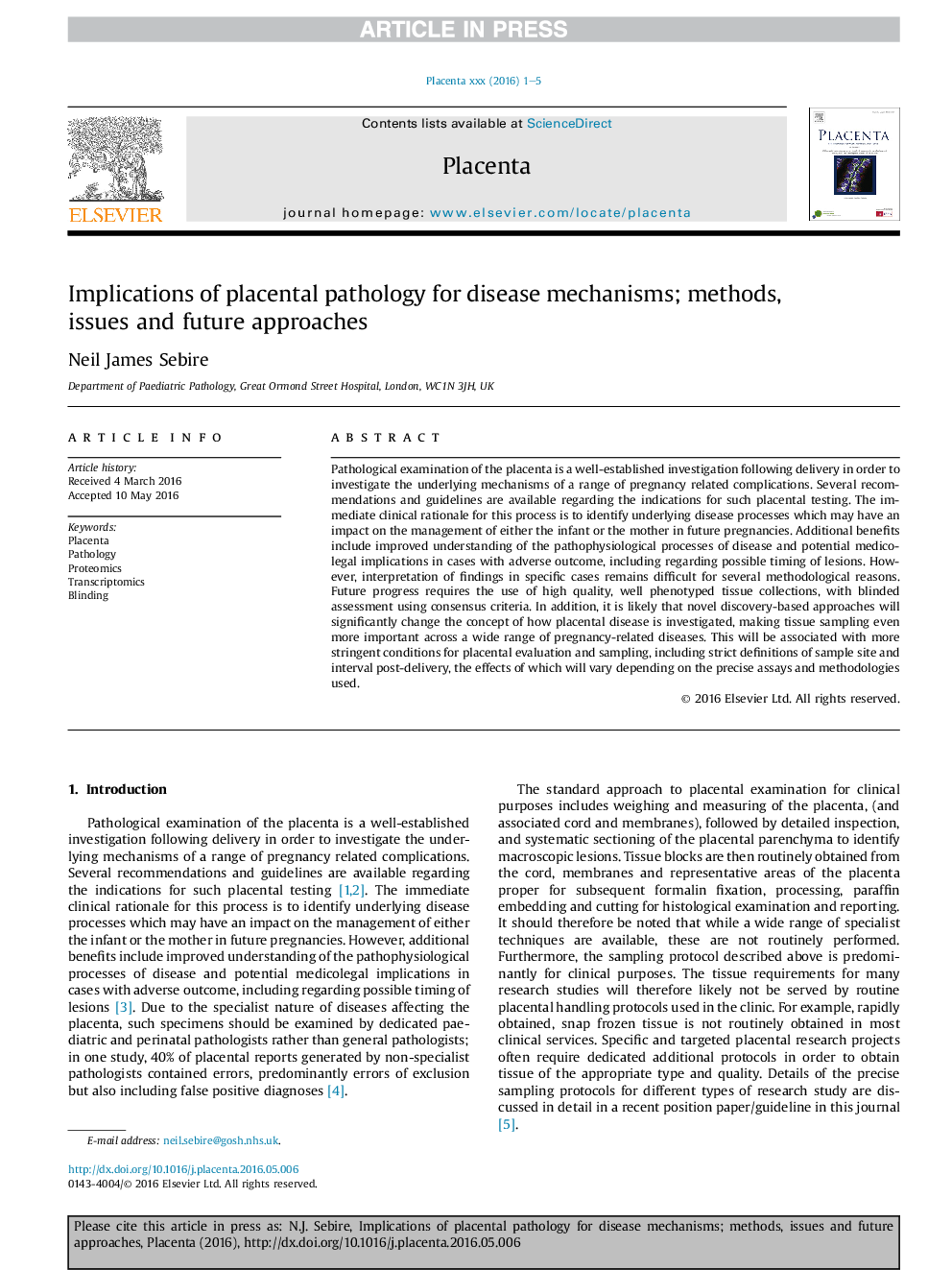| کد مقاله | کد نشریه | سال انتشار | مقاله انگلیسی | نسخه تمام متن |
|---|---|---|---|---|
| 5586127 | 1568556 | 2017 | 5 صفحه PDF | دانلود رایگان |
عنوان انگلیسی مقاله ISI
Implications of placental pathology for disease mechanisms; methods, issues and future approaches
ترجمه فارسی عنوان
پیامدهای آسیب شناسی جفتی برای مکانیزم های بیماری؛ روش ها، مسائل و رویکردهای آینده
دانلود مقاله + سفارش ترجمه
دانلود مقاله ISI انگلیسی
رایگان برای ایرانیان
کلمات کلیدی
ترجمه چکیده
معاینه پاتولوژیک جفت یک تحقیق جامع پس از زایمان است تا بررسی مکانیزم های زیربنایی تعدادی از عوارض مرتبط با بارداری باشد. توصیه های متعدد و دستورالعمل در مورد نشانه هایی برای چنین آزمایش جفتی در دسترس است. منطق بالینی فوری برای این فرآیند، شناسایی فرایندهای بیماری است که ممکن است بر روی مدیریت نوزاد یا مادر در حاملگی های آینده تاثیر بگذارد. مزایای اضافی شامل درک بهتر از فرآیندهای پاتوفیزیولوژیک بیماری و پیامدهای احتمالی داروهای پزشکی در مواردی با پیامد نامطلوب، از جمله در مورد زمان بندی احتمالی ضایعات است. با این حال، تفسیر یافته ها در موارد خاص برای چندین روش شناختی دشوار است. پیشرفت های آینده نیازمند استفاده از مجموعه بافت با کیفیت بالا و بافت فنوتیپی با ارزیابی کور با استفاده از معیارهای انطباق است. علاوه بر این، احتمالا روشی مبتنی بر کشف جدید، مفهوم چگونگی بررسی بیماری بیماری جسمی را تغییر خواهد داد و انتخاب نمونه های بافت در بیشتر طیف وسیعی از بیماری های مرتبط با بارداری نیز مهم است. این با شرایط دقیقتر برای ارزیابی و نمونه برداری جفت همراه است، از جمله تعریف دقیق از سایت نمونه و پس از تحویل فاصله، که اثرات آن بسته به روشهای دقیق و متدلوژی مورد استفاده متفاوت خواهد بود.
موضوعات مرتبط
علوم زیستی و بیوفناوری
بیوشیمی، ژنتیک و زیست شناسی مولکولی
زیست شناسی تکاملی
چکیده انگلیسی
Pathological examination of the placenta is a well-established investigation following delivery in order to investigate the underlying mechanisms of a range of pregnancy related complications. Several recommendations and guidelines are available regarding the indications for such placental testing. The immediate clinical rationale for this process is to identify underlying disease processes which may have an impact on the management of either the infant or the mother in future pregnancies. Additional benefits include improved understanding of the pathophysiological processes of disease and potential medicolegal implications in cases with adverse outcome, including regarding possible timing of lesions. However, interpretation of findings in specific cases remains difficult for several methodological reasons. Future progress requires the use of high quality, well phenotyped tissue collections, with blinded assessment using consensus criteria. In addition, it is likely that novel discovery-based approaches will significantly change the concept of how placental disease is investigated, making tissue sampling even more important across a wide range of pregnancy-related diseases. This will be associated with more stringent conditions for placental evaluation and sampling, including strict definitions of sample site and interval post-delivery, the effects of which will vary depending on the precise assays and methodologies used.
ناشر
Database: Elsevier - ScienceDirect (ساینس دایرکت)
Journal: Placenta - Volume 52, April 2017, Pages 122-126
Journal: Placenta - Volume 52, April 2017, Pages 122-126
نویسندگان
Neil James Sebire,
